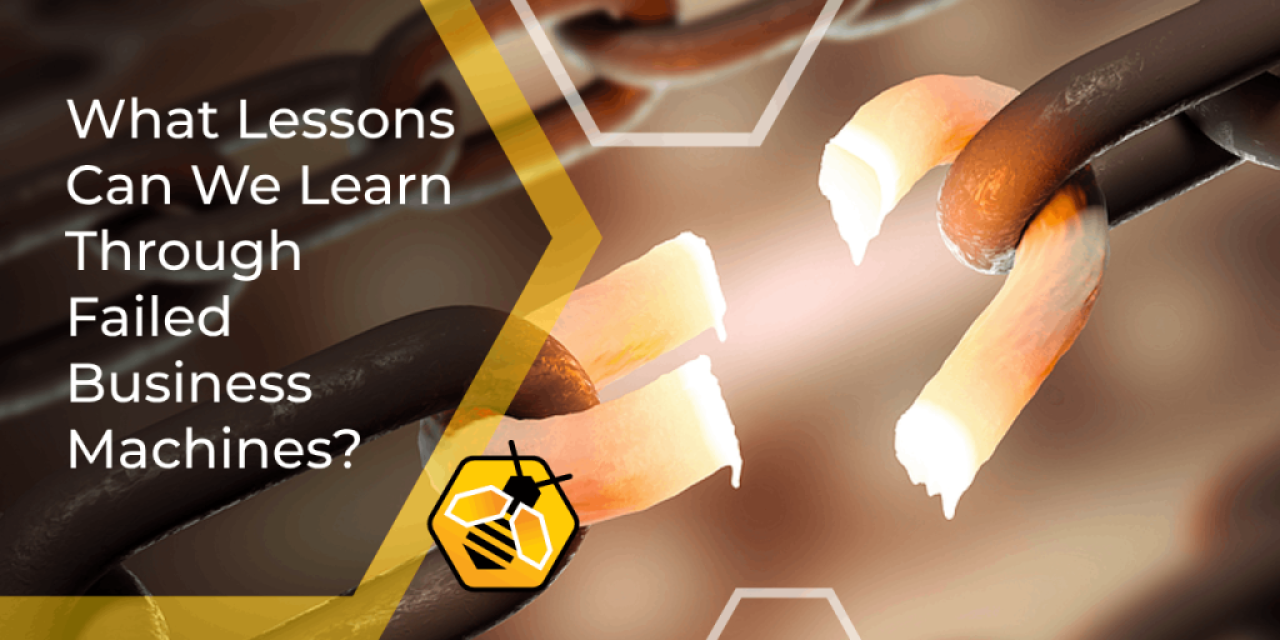What Lessons Can We Learn Through Failed Business Machines?
What Lessons Can We Learn Through Failed Business Machines?
Providing the best IT support and solutions to customers, whether they are a small business that needs a basic server and set of computers to keep the company going or a massive multinational that needs interconnectivity with various data centres, is as much about listening as advising.
As the psychophysicist Howard Moskowitz noted, there is often no single perfect recipe but a plurality of perfect recipes, and this principle can be applied beyond the realm of coffee, mustard and pasta sauce and into the world of information technology.
In 1987, the late IT entrepreneur Jack Tramiel exemplified the way in which computer manufacturers, IT suppliers and technical support can all only succeed by remembering that the reason all of this exists is in service to the customer and the end user.
This means listening, understanding the needs of the customer and providing the best solution and support for the best price.
Whilst a simple maxim, not everyone manages to get this right. Most of these mistakes also serve as learning experiences and whilst some technology companies ultimately do not get a second chance, they do also provide a clear direction for others following in their wake.
Listen, Do Not Dictate
A very good example of what not to do when designing a business machine is to explore what happens when you take the opposite of Mr Tramiel’s approach to computing at around the same time.
Mr Tramiel was the founder of Commodore Business Machines, creators of the highly popular VIC-20, Commodore 64 and later the Amiga 500 (albeit after he left), who was such a ruthless operator that he was commonly compared to General George Patton and lived by a maxim of “Business is War”.
His businesses developed machines based on what people wanted and therefore what would sell, which was a largely successful albeit unsentimental approach to computers.
The complete opposite of this was the late Sir Clive Sinclair, a tinkerer by nature who readily admitted he was not a businessman, instead wanting to miniaturise and simplify computers so that they would be available to everyone, believing to a degree that he knew what people truly wanted without actually asking them.
The most infamous example of this was the Sinclair C5, an early battery-electric vehicle that Sir Clive believed was the future of personal mobility, but was such a monumental disaster that he sold the only profitable part of his company to Alan Sugar’s Amstrad and was never taken seriously again.
However, the very same mindset that brought the world the C5 also led to the similarly unsuccessful Sinclair QL.
Short for Quantum Leap, the QL was meant to be a competitor for the Apple Macintosh and IBM PC but priced so much lower that it would be a viable option for small businesses.
Technically it was more powerful than the PC and closer than one might expect to the successful original Macintosh, but so many of its design ideas were at odds with what business users truly wanted that it ultimately became a financial disaster.
The keyboard was attached to the system and was the same as the ZX Spectrum +, but whilst this keyboard was better than the atrocious rubber membrane keys Sinclair was infamous for, it was not good enough for businesses, and users complained of an uncomfortable typing action compared to competitors.
Much worse than this, and arguably the decision that doomed it more than most was that the main storage medium of the QL was not the floppy disk or even the slow but incredibly cheap cassette tape but the infamous Microdrive.
Essentially a miniature cassette tape, it was very small and extremely unreliable, with a lot of QL software suggesting that a duplicate of the software be copied onto a second microdrive in case the first was rendered unusable.
Rather infamously, the QL was so poorly supported that Linus Torvalds, a Finnish programmer most famous for developing the core of Linux, a free operating system that is at the core of Android-powered mobile phones.
Know Your Audience
In 1987, the typewriter, camera and printer manufacturer Canon was looking to enter the computer business but in a way that would be welcoming to older office users more comfortable with typewriters.
This led to the development of the Canon Cat, designed by Apple Macintosh developer Jef Raskin as a middle ground between the electric typewriter and the IBM PC, providing a simple, easy-to-use machine with a remarkable amount of power and technical sophistication.
As a computer, the Canon Cat is remarkably efficient despite lacking the mouse that even by the late 1980s was starting to become increasingly important in IT, using a series of clever key combinations and two dedicated “Leap” keys to allow typists to reach any point in the document they wanted.
However, the issue was that the bulk of the marketing of the Cat was undertaken by the typewriter division at Canon, who in their infinite wisdom hid a lot of the powerful features and marketed the system as a de facto electric typewriter with a screen.
This was a problem, as it cost so much more than an electric typewriter that businesses stuck with their existing infrastructure or spent roughly the same price to buy one of many increasingly affordable PC-compatible systems if they needed the functionality.
Avoid Creating Single Points Of Failure
A tantalising prospect for both customers and developers alike is the idea of the all-in-one system or a single device that does everything you could realistically need it to do.
Many modern offices use laptops that allow work to be done almost anywhere as long as they can connect either directly or remotely to the company servers, and smartphones theoretically can be used for almost any business application.
However, one important part of any business system is redundancy; if there is a single point of failure then there is a much greater risk of prolonged downtime.
This was rather infamously the case with the Coleco Adam, a popular all-in-one computer system that was designed around its letter-quality printer and built-in high-speed (for 1983) storage. Both would end up having malfunctions that would ultimately destroy Coleco entirely.
The Adam generated so much electromagnetic static when turned on that it would wipe any tapes left in the computer, but the much bigger and more baffling issue was that the entire system was wired through the printer.
Unlike every computer made before or since, the printer had to be plugged in to provide power to the rest of the unit, and since the Adam’s printer was not the most reliable, this led to a lot of computers that simply would not work.




